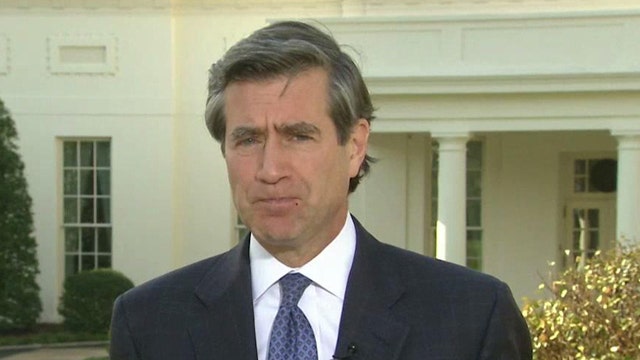Timetable for Demise of QEIII Hard To Set
The Federal Reserve has established specific thresholds for when it will start raising interest rates from historically low levels.
Everyone knows these thresholds by now: When the unemployment rate falls to 6.5% and/or inflation climbs to 2.5% the Fed will start raising rates from their current range of 0%-0.25%.
Both thresholds would appear to be a long way off.
Those figures, however, have taken the guessing game out of when short-term interest rates will start to rise again, providing a certain measure of stability for financial markets and allowing investors to concentrate on other areas of fiscal policy and the economy.
Namely, when the Fed is going to scale back its bond-buying programs, which are currently rolling along at a pace of $85 billion a month in an effort to keep interest rates low on long-term loans such as mortgages.
“Even (members of the Fed) don’t fully know the point at which they can comfortably start scaling back quantitative easing.”
People often mistakenly believe that those unemployment thresholds also apply to the Fed’s bond-buying programs, also known as quantitative easing or QE. They don’t. Which begs the question: If specific thresholds can be set for raising interest rates, why not for when the Fed might start tapering off QE?
It turns out the answer is pretty simple.
“Even (members of the Fed) don’t fully know the point at which they can comfortably start scaling back quantitative easing,” said Greg McBride, senior financial analyst at Bankrate.com.
Quantitative easing, or purchasing massive quantities of U.S. Treasuries and other government-backed securities such as mortgages in an effort to pump liquidity into the dormant U.S. economy, is intended to bring about “sustainable improvements” in both U.S. labor markets and the broader economy, McBride explained.
The problem is that those goals are highly subjective and, furthermore, any signs of “sustainable” economic growth have repeatedly failed to gain momentum. Consider last Friday’s job report, which revealed just 88,000 jobs were created in March. The poor numbers arrived after several months of improved labor reports, which helped drive the unemployment rate down to its lowest level in four years.
“When you look at last Friday’s jobs report it’s pretty clear we’re not at that sustainable point in the job market yet,” said McBride.
The mixed data haven't stopped critics of the Fed’s easy money policies from suggesting that the time is rapidly approaching for putting an end to QE, or at least scaling it back.
Fed inflation hawks who sit on Federal Open Markets Committee, which sets most Fed policy, have suggested QE might start tapering off as early as mid-2013 and terminated soon after that, according to minutes of the Fed’s March meeting released on Wednesday.
Fed Divided on Tapering Off QE
“A few members felt that the risks and costs of purchases, along with the improved outlook since last fall, would likely make a reduction in the pace of purchases appropriate around mid-year, with purchases ending later this year,” the FOMC minutes reported.
The minutes, remember, are from a meeting held last month, before the disappointing March jobs numbers were released.
Fed inflation hawks believe the Fed’s easy money policies that have kept interest rates near zero for over four years could lead to runaway inflation.
Typically, FOMC members disagree on the dangers posed by loose fiscal policy, and a majority apparently still believes QE should be maintained without a predetermined deadline. That powerful group is headed by Fed Chairman Ben Bernanke and Vice-Chair Janet Yellen, who is widely viewed as Bernanke’s probable successor if Bernanke isn’t appointed to a third term next year.
QE has certainly been a boon for stock markets, as Wednesday’s Fed minutes, which indicated QE will go on unabated for the foreseeable future, pushed the Dow Jones Industrial average and S&P 500 index to new all-time highs.
Nevertheless, the potential long-term risks are great, as Fed critics are eager to point out.
In a Wall Street Journal op-ed piece published Wednesday, Edward Pinto of the fiscally conservative American Enterprise Institute, criticized the Fed for ignoring the long-term threats to the economy in favor of a short-term boost to stocks and an 8% increase in housing prices from a year ago.
According to Pinto, recent data from the the Federal Housing Finance Agency indicates that the sharp increase in home prices has resulted not from “broad-based improvement in the economy’s fundamentals” but rather from the Fed’s easy money policies. “This does not bode well for the future,” Pinto wrote.
Pinto suggests that if the Fed insists on keeping interest rates artificially low through massive bond-buying programs it could lead to another housing bubble. “Americans have seen this movie before and know how it ends,” he wrote.
This argument over ending QE is hardly new and Bernanke has proven successful at deflecting criticism, saying essentially the bond-buying programs will end when they’re not needed anymore. And that’s that.




















